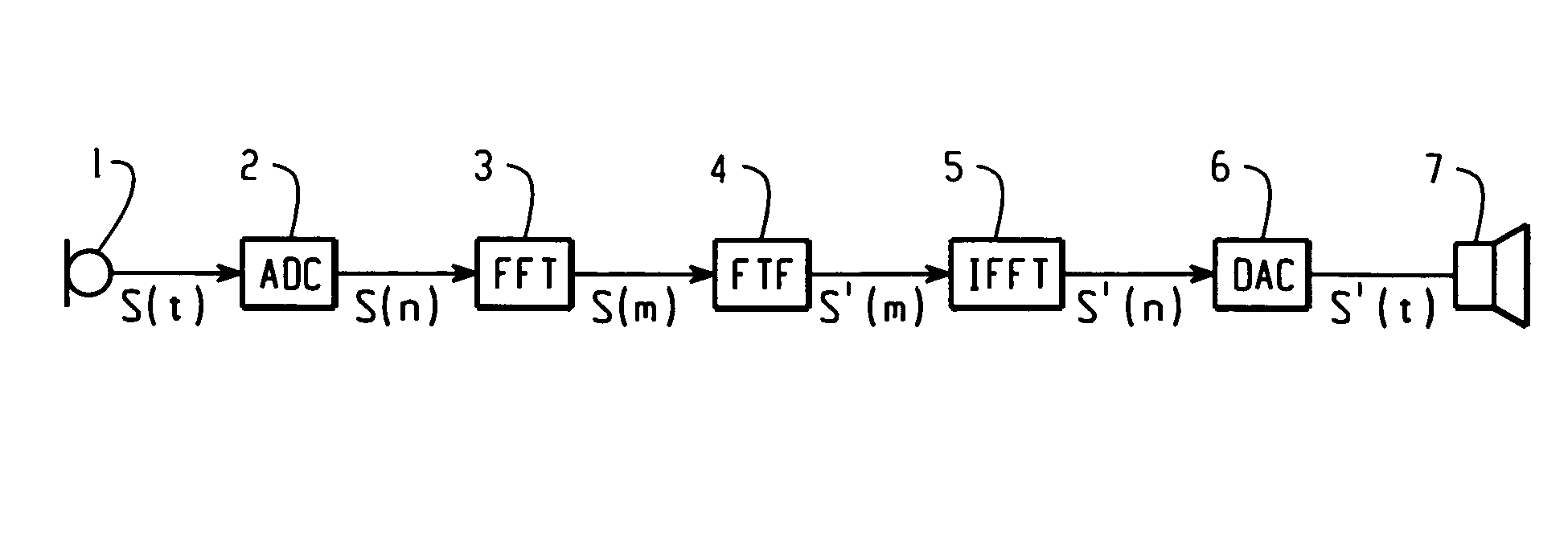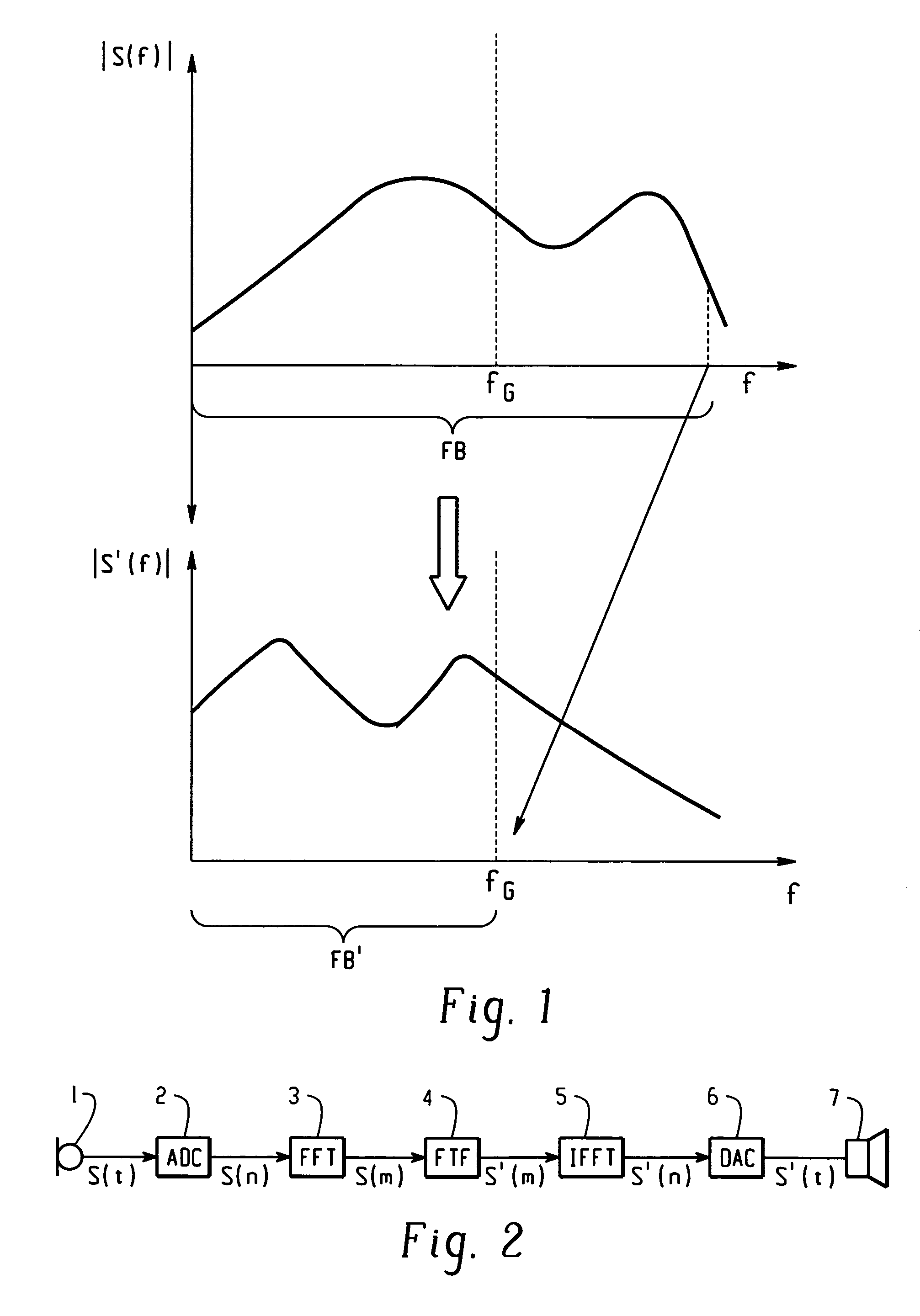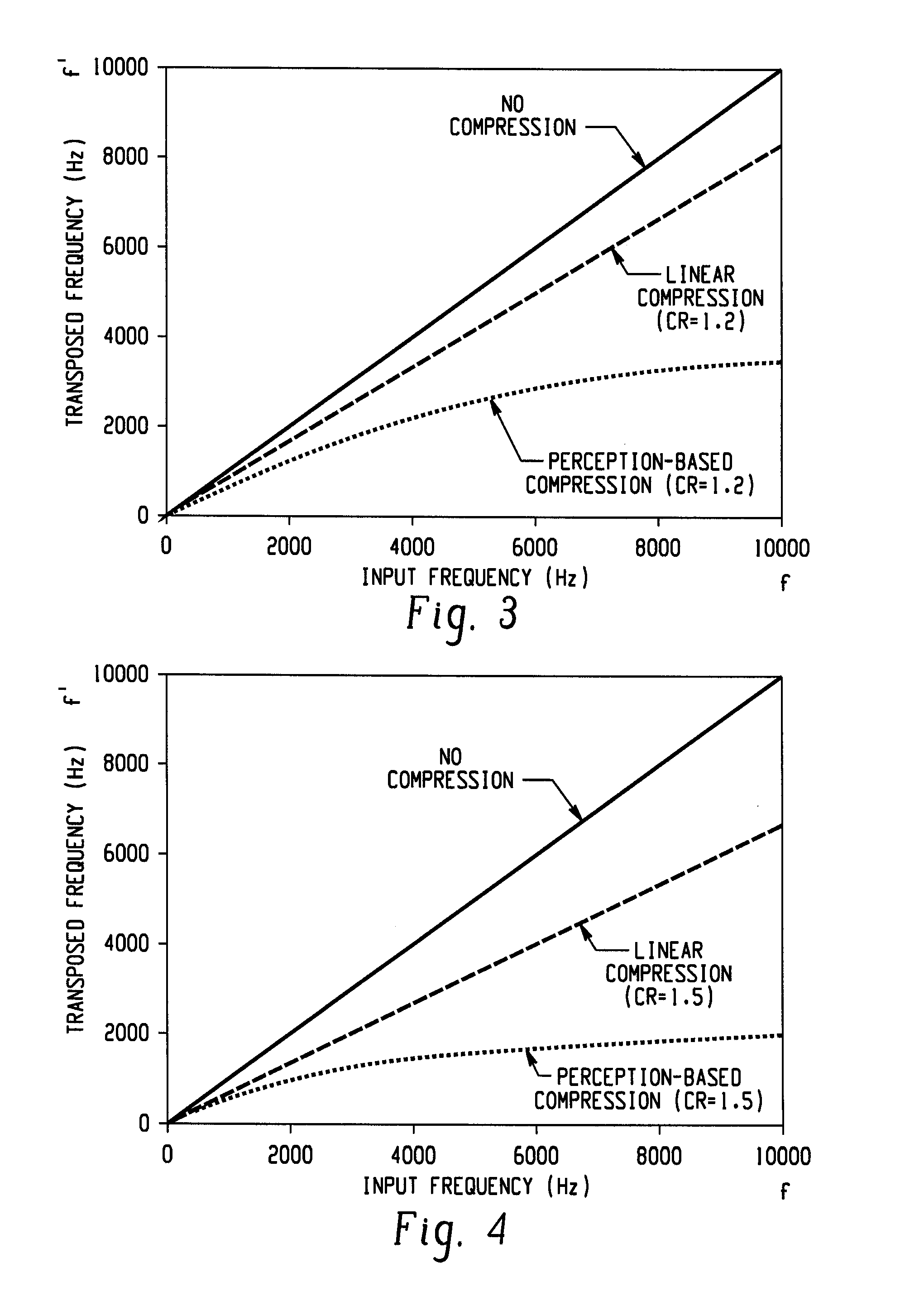Method for frequency transposition and use of the method in a hearing device and a communication device
a frequency transposition and communication device technology, applied in the field of frequency transposition and communication device, can solve the problems of inability to identify suitable candidates for lack of methods for fitting frequency transposition hearing aids, and limited successful application of such techniques, so as to achieve the effect of facilitating frequency transposition and ensuring transmission quality
- Summary
- Abstract
- Description
- Claims
- Application Information
AI Technical Summary
Benefits of technology
Problems solved by technology
Method used
Image
Examples
Embodiment Construction
[0026]As has already been mentioned, frequency transposition is a potential means for providing profoundly hearing impaired patients with signals in their residual range. The process of frequency transposition is illustrated in FIG. 1, wherein the magnitude spectrum |S(f)| is shown of an acoustic signal in the upper graph of FIG. 1. A frequency band FB is transposed by a frequency transposition function to obtain a transposed magnitude spectrum |S′ (f)| and a transposed frequency band FB′. It is assessed that the hearing ability of the patient is more or less intact in the transposed frequency band FB′ whereas in the frequency band FB it is not. Therefore, it is possible by the frequency transposition to image a part of the spectrum from an inaudible into an audible range of the patient. As a measure for the frequency transposition, a so-called compression ratio CR is defined as follows:
[0027]CR=FBFB′
[0028]So far, linear or proportional frequency transposition (as it is shown in FIG...
PUM
 Login to View More
Login to View More Abstract
Description
Claims
Application Information
 Login to View More
Login to View More - R&D
- Intellectual Property
- Life Sciences
- Materials
- Tech Scout
- Unparalleled Data Quality
- Higher Quality Content
- 60% Fewer Hallucinations
Browse by: Latest US Patents, China's latest patents, Technical Efficacy Thesaurus, Application Domain, Technology Topic, Popular Technical Reports.
© 2025 PatSnap. All rights reserved.Legal|Privacy policy|Modern Slavery Act Transparency Statement|Sitemap|About US| Contact US: help@patsnap.com



